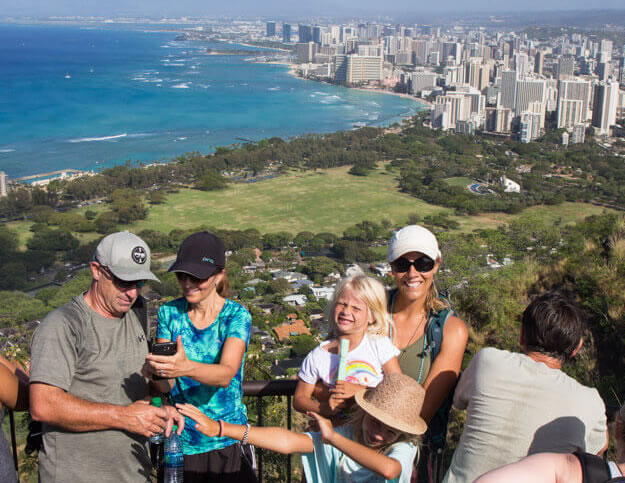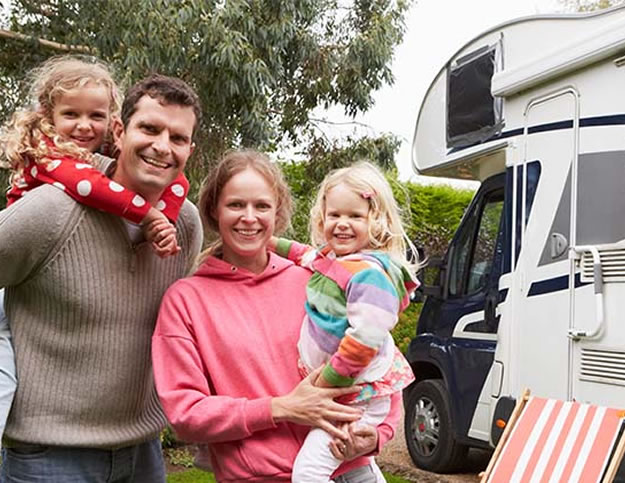Travel is one of life’s greatest joys. Exploring a new city, wandering through unfamiliar streets, sampling local cuisine, and immersing yourself in unique cultural experiences can feel like a dream come true. Yet in the excitement of adventure, many travelers overlook the importance of pacing themselves, which can lead to stress and fatigue. To truly enjoy your holiday and return home refreshed, it’s essential to plan thoughtfully and take steps to avoid travel burnout before it turns your dream trip into a draining experience.
Understanding Travel Burnout
Travel burnout is more common than people think. It is not simply feeling tired after walking a few miles or waking up early for sightseeing. Travel burnout is a mental and physical state characterized by fatigue, stress, and overwhelm, which can make the experience less enjoyable. It can manifest as irritability, decreased motivation, lack of interest in activities, or even health issues such as digestive problems or insomnia.

Unlike regular stress, travel burnout is compounded by the unfamiliarity of being in a new environment. Jet lag, language barriers, navigating public transport, and trying to pack too many activities into a limited time all contribute to this phenomenon. Recognizing the early signs can make a significant difference in preventing burnout before it ruins your holiday.
15 Smart Ways to Avoid Travel Burnout and Enjoy Every Trip
1. Planning Smartly
One of the most effective ways to avoid travel burnout is through thoughtful planning. This does not mean overloading your itinerary with back-to-back activities. In fact, the opposite is true. A realistic schedule allows room for spontaneity and rest.
Start by identifying your priorities. Instead of trying to see every museum, monument, or park in a city, pick a few experiences that matter most to you. Research in advance to determine which activities might be more strenuous and which ones are more relaxing. For example, walking through a bustling city market may be exciting but can also be draining after a few hours. Pair it with a relaxing afternoon in a quiet café or a scenic park to balance the day.
Spacing out major activities is crucial. If you plan a long day of sightseeing, follow it with a lighter day to recover. Include rest days or half-days in your itinerary where the only “planned” activity might be lounging by the beach, reading a book in a hotel lounge, or enjoying a leisurely meal. This pacing ensures that you maintain energy throughout your trip.
2. Traveling at Your Own Pace
It is easy to fall into the trap of traveling according to someone else’s schedule. Social media can make it seem like every destination requires an exhaustive checklist of attractions. While it is fun to be inspired by others’ adventures, it is essential to travel at a pace that suits you.
If you are naturally an early riser, consider visiting major attractions in the morning and reserving the afternoon for downtime. Night owls might enjoy relaxed mornings followed by evening excursions. Understanding your energy patterns allows you to schedule activities when you are most alert and enthusiastic.
It is also essential to accept that skipping certain attractions is perfectly okay. Missing one museum or walking tour does not diminish the quality of your holiday. Prioritize experiences that bring you joy, rather than trying to tick every box.
3. Packing and Travel Logistics
Even minor logistical stressors can contribute to burnout. Overpacking, carrying heavy luggage, or mismanaging travel documents can add unnecessary strain. When packing, focus on essentials and versatility. A lighter suitcase reduces the effort of navigating airports, buses, and trains, freeing up energy for activities you actually enjoy.
Plan transportation thoughtfully. Rushing between destinations or relying solely on tight public transport connections can add a stress factor due to the need for buffer time for delays, security checks, and unexpected mishaps. Having a flexible mindset when it comes to travel logistics helps reduce anxiety and makes the journey more enjoyable overall.
4. Rest and Sleep
Sleep is often overlooked while traveling, but it is one of the most critical factors in preventing burnout. Experiencing a new place may make you eager to stay out late or rise early, but ignoring rest can lead to fatigue, irritability, and a weakened immune system.
If jet lag is a concern, adjust your sleep schedule a few days before departure to match the destination’s time zone. During your trip, prioritize consistent sleep patterns whenever possible. Short naps in the afternoon can also help recharge your energy, especially on long travel days. Accommodations with comfortable beds, quiet surroundings, and minimal disruptions should be a priority for ensuring a good night’s rest.
5. Nutrition and Hydration
Food and drink play a vital role in your energy levels while traveling. Trying every street food delicacy is one of the joys of travel, but constantly eating heavy, greasy meals or skipping meals entirely can lead to low energy and burnout.
Aim for balanced meals that include fruits, vegetables, proteins, and whole grains. Snack wisely to maintain steady energy throughout the day. Hydration is equally important, especially when exploring hot climates or walking long distances. Carry a reusable water bottle and sip regularly. Even mild dehydration can cause headaches, fatigue, and irritability, quickly dampening the joy of your travels.
6. Mindful Travel Practices
Mindfulness is an often-overlooked aspect of preventing travel burnout. Being fully present in each moment allows you to appreciate the experience without feeling overwhelmed by the pace of travel.
Start with small practices such as taking a few deep breaths before entering a busy tourist area or pausing to savor a meal instead of rushing through it. Journaling or photography can help you process your experiences without adding pressure to “do it all.” Mindful travel also involves being conscious of your limits. If you notice fatigue or stress building up, acknowledge it and allow yourself to rest without guilt.
7. Mixing Activity Types
Variety in your itinerary can prevent both physical and mental exhaustion. Alternating between high-energy activities and low-energy experiences ensures a more balanced travel rhythm.
For example, a morning hike up a scenic trail can be followed by an afternoon visit to a museum or a leisurely coffee at a local café. A relaxing evening boat ride might complement a day spent exploring a city on foot. This approach not only preserves energy but also allows you to enjoy different aspects of a destination without feeling drained.
8. Solo vs. Group Travel Considerations
Travel burnout can occur in both solo and group travel settings, but the approach to pacing yourself may differ. Solo travelers often have more control over their schedule and can prioritize rest without compromise. The challenge for solo adventurers is resisting the temptation to over-plan in an effort to “make the most” of their trip.
Group travelers, on the other hand, may face pressure to keep up with others’ energy levels and interests. It is crucial to communicate your needs to your travel companions. Taking a break from group activities for a few hours to recharge is not only acceptable but can prevent frustration and tension later in the trip.
9. Balancing Technology Use
Technology can be both a help and a hindrance while traveling. Navigation apps, travel guides, and language translators make exploring easier, but constant use of social media and digital devices can increase stress and reduce mindfulness.
Limit time spent scrolling through social media or comparing your trip to others. Use your devices intentionally to enhance your experience by researching local restaurants, booking tickets in advance, or tracking your itinerary. Unplugging for periods during the day allows you to immerse yourself in the environment and engage more deeply with the people and culture around you.
10. Flexible Itinerary Management
Flexibility is key to avoiding travel burnout. A rigid schedule that tries to fit in too many activities often leads to stress when plans go awry. Travel comes with surprises, such as sudden weather changes, transportation delays, or spontaneous local events.
Building flexibility into your plans allows you to adapt without frustration. For instance, if a rainy day cancels an outdoor activity, you can pivot to a museum visit or café exploration without feeling like the day is wasted. This mindset encourages resilience and reduces anxiety, making the overall travel experience more enjoyable.
11. Engaging With Local Culture
One way to keep travel exciting without exhausting yourself is to engage with local culture in meaningful ways. Rather than attempting to see every landmark, consider slower, more immersive experiences. Participate in a cooking class, attend a local music performance, or join a community tour led by residents.
These activities often provide a deeper understanding of the destination while requiring less physical exertion than a nonstop sightseeing schedule. Meaningful engagement also creates lasting memories that are more satisfying than checking off a list of tourist spots.
12. Using Downtime Wisely
Downtime is not wasted time. In fact, it is essential for recharging your energy and maintaining enthusiasm throughout your trip. Use downtime to rest, reflect, and recover from travel activities.
Simple practices, such as having a leisurely breakfast, reading a book, journaling, or simply sitting in a park and observing local life, can replenish your mental and emotional energy. Downtime also provides an opportunity to process experiences and plan the next day thoughtfully.
13. Listening to Your Body
Ultimately, preventing travel burnout requires listening to your body and responding to its needs. Fatigue, headaches, digestive issues, and irritability are signs that you may be overexerting yourself. Ignoring these signals can escalate stress and reduce the overall enjoyment of your holiday.
Schedule breaks, hydrate, eat well, and allow yourself the freedom to skip activities when necessary. By treating your body with respect and acknowledging your limits, you ensure that travel remains a source of joy and relaxation rather than exhaustion.
14. Mental Preparation Before Travel
Preparing mentally before you leave can also reduce the risk of burnout. Travel is unpredictable, and adjusting expectations is crucial. Remember that you cannot see or do everything, and that flexibility is an essential part of any trip.
Setting realistic expectations helps prevent disappointment and stress. Research your destination, focusing on experiences rather than strict checklists. Visualize your trip with room for rest, spontaneity, and unplanned discoveries. A positive mindset going into your journey can prevent the feeling of being constantly on the go.
15. Travel Self-Care Strategies
Integrating self-care into your travel routine is an effective way to avoid burnout. Self-care does not mean indulgence; it means nurturing your physical and mental well-being while on the move.
This can include regular stretching, meditation, journaling, skincare routines, or even light exercise. Simple practices, such as taking a morning walk, engaging in evening reflection, or taking an afternoon nap, can make a significant difference in maintaining energy and mental clarity. These habits are beneficial during long trips or multi-destination travel where fatigue can accumulate quickly.
The Art of Traveling at Your Own Pace
Travel is an opportunity to explore the world, learn about new cultures, and create memories. However, without pacing yourself, even the most exciting trip can lead to burnout. Planning smartly, traveling at your own pace, prioritizing rest and nutrition, and practicing mindful engagement with your surroundings are all essential strategies to avoid exhaustion.
By listening to your body, allowing flexibility in your itinerary, and incorporating downtime and self-care, you can ensure that your holiday is both fulfilling and rejuvenating. Remember, it is not about seeing everything but about savoring the experiences you have. Pacing yourself is not a compromise; it is the key to truly enjoying your journey and returning home refreshed, inspired, and ready for your next adventure.
















